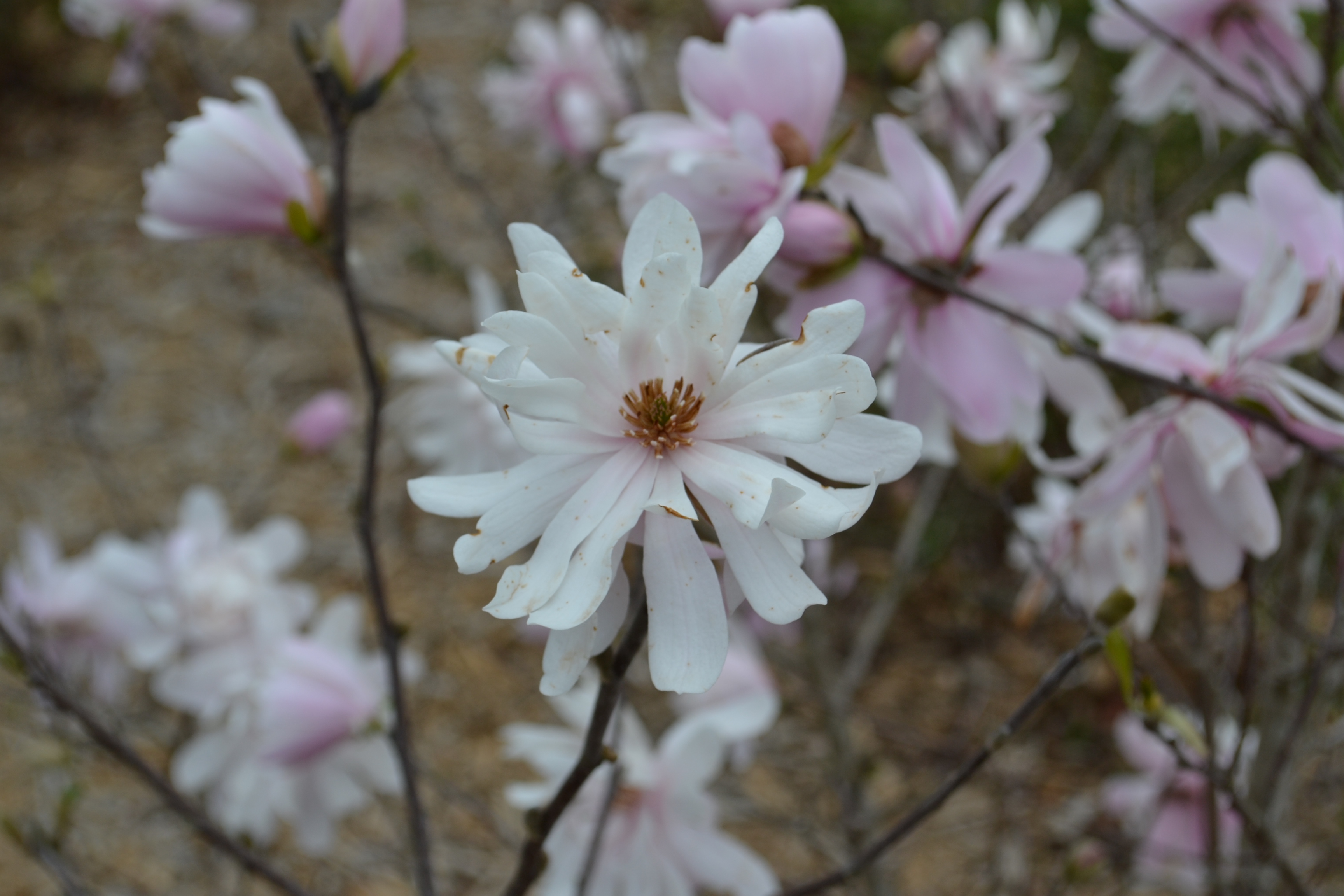
by Beth Bolles | Feb 24, 2016
Magnolias are well known plants to gardeners and many are familiar with the foliage and flowers of these plants. If you are looking for another earlier bloomer, you may want to consider adding a specimen selection to your landscape, the Star magnolia (Magnolia stellata).
Although not native to the United States, star magnolia is a slower growing multi stemmed deciduous shrub reaching about 15 feet in height over time. The best feature are the bright whitish pink star-shaped blooms appearing in late winter before leaves emerge. The flowers offer gardeners a peek of the spring to come and remind us that our Gulf Coast winters are not that long. 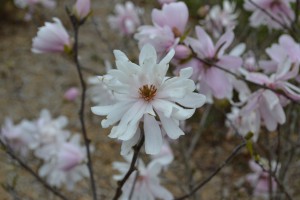
Plants do best in soil with some organic amendments and mulch over the root systems. A planting area that receives a little afternoon shade is ideal but established plants will adapt to sunnier locations when irrigation is provided during drier weather. Only occasional pruning is required to remove crossing branches or those that grow out of bounds. Prune after flowering if needed.
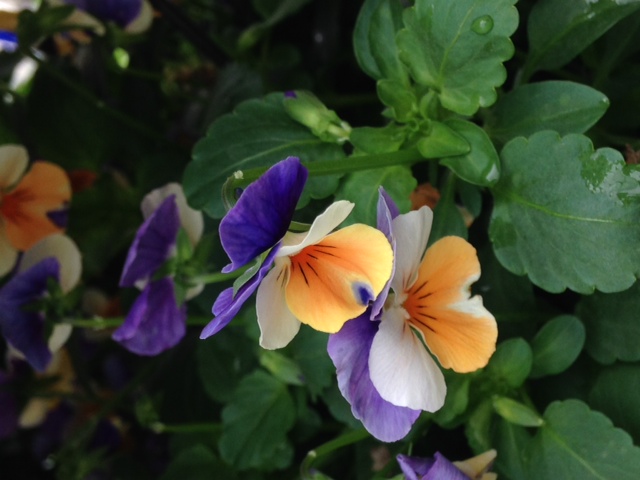
by Julie McConnell | Nov 24, 2015
 You may have heard “group plants with similar needs together” but struggled to come up with some combinations that work. The most important things to consider when creating functional garden space is the cultural needs of the plants you want to combine. Sunlight, water, and fertilizer needs should be very similar when planting multiple plants together. For fall and winter gardens, choose annuals that are frost tolerant and/or evergreen perennials.
You may have heard “group plants with similar needs together” but struggled to come up with some combinations that work. The most important things to consider when creating functional garden space is the cultural needs of the plants you want to combine. Sunlight, water, and fertilizer needs should be very similar when planting multiple plants together. For fall and winter gardens, choose annuals that are frost tolerant and/or evergreen perennials.
Here are some plants that work well together in cool weather:
- Strawberries and romaine lettuce – both are cool season annuals that can be planted in late October or early November. The lettuce can be harvested from outside leaves after growth begins or let it form a head and cut the entire plant. Strawberries will spread out but remain fairly low growing compared to the upright lettuce. These plants combine well in a container if given room to expand.
- Rosemary and oregano – these culinary herbs thrive in sunny, well-drained spots. Rosemary is an upright woody perennial and oregano spreads along the ground making a fragrant groundcover for a tough spot.
- Snapdragons, pansies, and parsley – this combination gives foliage contrasts in addition to colorful flowers. This combination will work in full sun or a slightly shaded spot in th
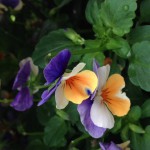 e garden. In the spring, replace the snapdragons and pansies for warm season annuals for continued color.
e garden. In the spring, replace the snapdragons and pansies for warm season annuals for continued color.
- Cabbage, cauliflower, and strawberries – all cool season edible crops that have attractive foliage and similar needs.
- Snapdragons, violas, and petunia – this colorful combination has three height levels of tall snaps, bunching violas, and trailing petunias.
To learn more about these plants and other options Growing Strawberries in the Florida Home Garden, Herbs in the Florida Garden, and Gardening with Annuals in Florida.
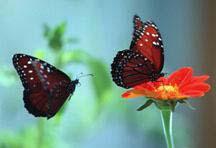
by Mary Salinas | Jul 7, 2015
Butterflies are not only beautiful to look at in your landscape; they serve as important pollinators and indicators of the health of our environment. Attracting them to your garden and incorporating some features to get them to stay and make it their home involves a little planning ahead of time for optimum results.

Queen butterfly. Photo credit: Milt Putnam, UF/IFAS.
Choose a location that provides some protection from wind. Trees and shrubs that provide wind protection also serve as a safe harbor from rain and predators. The garden should be mostly sunny with some part sun areas. Ensure that any new plantings have access to a convenient irrigation source so they can be successfully established and maintained in good health.
Now you’ll need to choose the plants. Adults feed on the nectar of many flowering trees, shrubs, perennials, and annuals and, fortunately, there are usually many choices that will meet your site requirements and your taste preferences. In order to keep the butterflies in your garden, certain plants need to be available to serve as host plants for their young. Determine which species of butterfly is common in your area and that you want to attract. Most species have very few plants on which the caterpillars can feed so those host plants need to be chosen wisely. Determine whether any of the plants you already have are host plants and they can be integrated into your butterfly garden. For example, cassia is a host plant for the Cloudless Sulphur and citrus is a host plant for the Giant Swallowtail.
In choosing your nectar plants, select those that are native or Florida-Friendly as they are lower maintenance, giving you less trouble in the long run. Choose plants that have flowers in a variety of color, size, and shape. Different butterflies like to feed at different elevations, so choose trees, shrubs, perennials, and annuals of varying heights. In order to have nectar available throughout the time when the butterflies occur, include plants that bloom at different times of the year. And include some plants that bloom from spring to late fall, like pentas or moss verbena.
Larger plants should be placed in the background with smaller plants layered in the foreground. When you plant smaller annuals and perennials, place them in masses to better attract the butterflies. Consider placing host plants in an area that is in close proximity to the nectar plants, but in an area of your garden that is not a focal point. Host plants can get quite ragged looking from hungry caterpillars!
Good maintenance practices will enhance the health of your garden. Regular fertilization and irrigation if needed will help keep your plants in bloom and healthy; healthy plants are less susceptible to disease and pests. Avoid pesticides as they may harm the very creatures you are trying to attract. Never use Bt or systemic pesticide. If you must, target a pest with lower risk oils or soaps and then only treat the affected plants. Lastly, be aware of beneficial insects that will help you achieve satisfactory control of a pest.
Now that your plants are placed there are several things to do to make your butterfly garden complete. Add a spot where water can puddle on the ground for the adult butterflies to drink. They require minerals from the soil that get dissolved in the water. Also add a rock or log in a sunny spot where butterflies can rest and sun themselves. And consider placing a comfortable place for you to sit and enjoy the beauty of your garden and its inhabitants!
For more information:
Butterfly Gardening in Florida
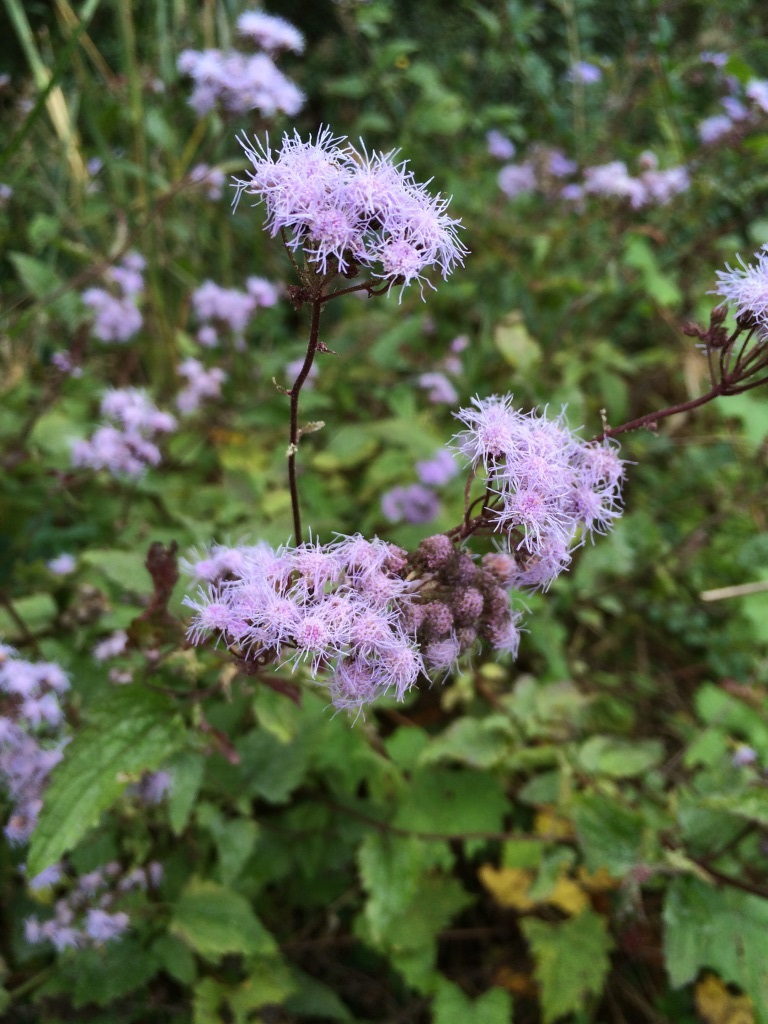
by Mary Salinas | Nov 18, 2014
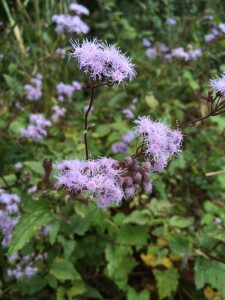
Blue Mistflower – Image Credit Mary Derrick, UF / IFAS
Here’s a beautiful native perennial wildflower that is easy to grow and generally available in the independent nursery trade. In the wild, you can encounter them at the edges of woodlands and ponds as they prefer moist areas. Blue mistflower, Conoclinium coelestinum, performs well as a perennial in the home landscape but does spread easily by seed and will spread in the garden. It also spreads through underground rhizomes which allow it to form large clumps. This is an advantage for the informal garden, however, the gardener who prefers a more formal look will have a bit more maintenance in controlling that spread.
The abundant flowers look like bluish-purple puffballs on the top of the stems. The color is unusual and adds a striking touch in the garden. The bloom season is mid-summer to mid-fall. Butterflies are frequent visitors, making this an excellent addition to your butterfly garden.
Blue mistflower has a full rounded form and will grow to 3 feet under optimum conditions. Leaves are opposite and have a triangular shape. Growth and blooming is best in full sun to part sun conditions.
Give it a try!
by Taylor Vandiver | Oct 7, 2014
I think it’s safe to say fall is officially here. Shouts can be heard from local football stadiums, occasionally a crisp fall breeze will send us looking for a light jacket, and coffee shops are pushing all things pumpkin. Now that we can officially appreciate the cooler fall weather, it may be time to stretch our legs and marvel at the spectacular show of color our landscapes are putting on. Here are a few plants that are showing off this time of year.
Firebush (Hamelia patens) – This charming Florida native will delight everyone with beautiful orange-red flowers throughout most of the year. Hummingbirds and butterflies enjoy the nectar in the flowers. Firebush can reach a height and width of 8 to 12 feet. It is a fast growing plant that will grow well in part to full sun environments.
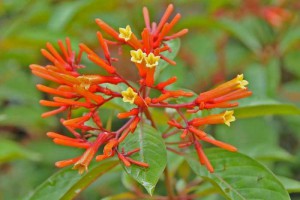
Bright orange-red blooms on a firebush. Photo courtesy UF/IFAS.
Salvia (Salvia spp.) – Salvias are great plants for bringing butterflies and hummingbirds to your garden and as a bonus, they have no serious pests. With hundreds of annual and perennial species coming in an array of colors and sizes, you can easily find one or more to complement your landscape. Salvias perform best in full sun environments and are considered drought tolerant.
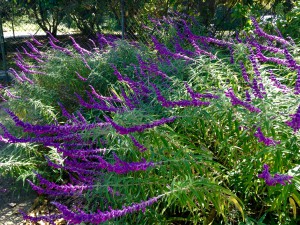
Deep purple blooms on a salvia in the landscape. Photo courtesy Taylor Vandiver.
Turk’s Cap (Malvaviscus arboreus) – Turk’s cap can add a cheerful pop of color at a time when little else is blooming. This old-fashioned Florida-Friendly shrub like perennial is related to the hibiscus. It’s known for its bright red flowers that always seem ready to open, but never do. Turk’s cap starts blooming in summer and keeps going until through winter, unless hit by a hard frost. It can grow in full sun and reach up to ten feet tall and ten feet wide, so give it room to grow. This easy-care native perennial requires little maintenance once it’s established.
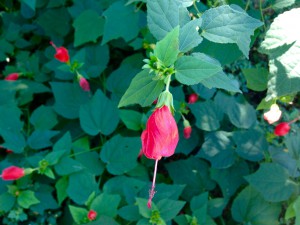
Turk’s cap showing off its unique blooms. Photo courtesy Taylor Vandiver
Coleus (Solenostemon scutellarioides) – When imagining fall color we often don’t consider coleus. However, the vibrant foliage can add interest to any landscape throughout the fall. Coleus is prized for its colorful foliage, which comes in shades of green, yellow, pink, red, and maroon. Coleus varieties can range from one to several feet in height. They can be used in hanging baskets, containers on patios, or in landscape beds. Coleus prefers partial shade and you can pinch the growing stems of young plants frequently to encourage dense foliage. Keep an eye out for mealybugs on coleus and use insecticidal soap if problems develop
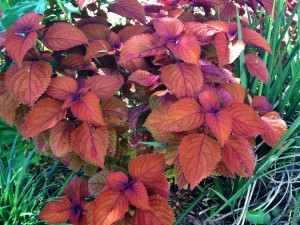
Burnt orange foliage standing out amongst the neutral green of the landscape. Photo courtesy Taylor Vandiver.
Fore more information contact your local extension agent. Also you can visit us at gardeningsolutions.ifas.ufl.edu or edis.ifas.ufl.edu.





 e garden. In the spring, replace the snapdragons and pansies for warm season annuals for continued color.
e garden. In the spring, replace the snapdragons and pansies for warm season annuals for continued color.





